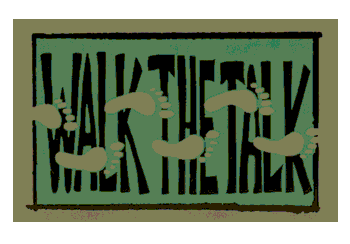Walk The Talk For Shut Up
The "walk and talk" is adapted from an earlier literary device in which the characters achieve two purposes simultaneously by traveling towards an objective while exchanging information through dialogue, as in the story "The Adventure of the Engineer's Thumb", in which Sherlock Holmes, Doctor Watson and three other characters compare differing theories while traveling by train to the scene of an earlier crime. In movies (far more so than in television), it has been recognized for decades[citation needed] that an ordinary dialogue scene -- in which absolutely nothing is happening, other than people talking -- can be made much more interesting visually if the characters are aboard a moving vehicle with some sort of changing background visible through the windows behind them. One example of this device is the "cuckoo clock" scene in The Third Man, in which Orson Welles and Joseph Cotten have a conversation aboard a moving Ferris wheel, and the end of their talk occurs at its starting point
Think About These Little Jewels Of Whisdom
I'd rather see a sermon
Than hear one any day.
I'd rather once you walk with me
Than merely show the way.
The eye's a better pupil
And more willing than the ear.
Fine counsel is confusing
But the example's always clear.
I soon can learn to do it
If you let me see it done.
I can see your hands in action
But your tongue too fast may run.
And the lectures you deliver
May be very fine and true.
But I'd rather get my lesson
By observing what you do.
For a person must understand you
And the high advice you give.
But there's no misunderstanding
How you act and how your live.
Edgar Guest
